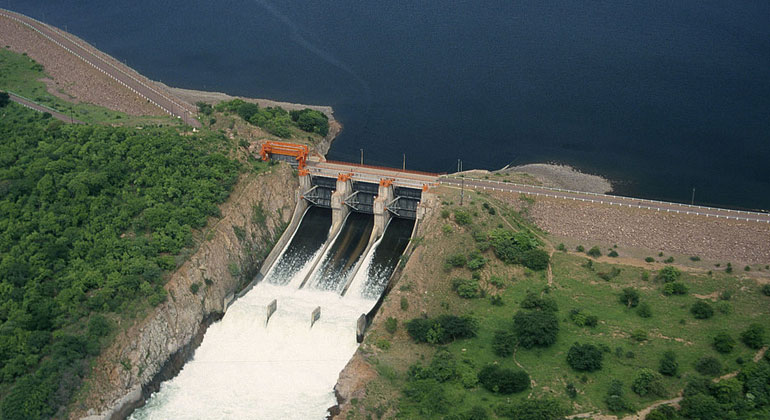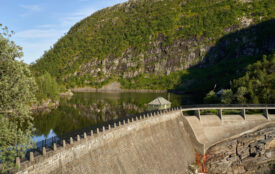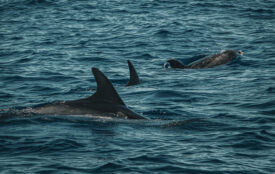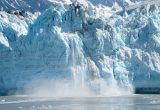Navigating Trade-Offs Between Dams and River Conservation
Connected and healthy rivers deliver diverse benefits that are often overlooked: freshwater fish stocks that improve food security for hundreds of millions of people, nutrient-rich sediment that supports agriculture and keeps deltas above rising seas, floodplains that help mitigate the impact of floods, and a wealth of biodiversity.
Navigating Trade-Offs Between Dams And River Conservation, a new report in the journal, Global Sustainability, reveals that if all proposed hydropower dams are built, over 260,000 km of rivers (160,000 miles), including the Amazon, Congo, Irrawaddy, and Salween mainstem rivers, will lose free-flowing status.
The study, led by World Wildlife Fund and McGill University, also finds that in exchange for this vast disruption, the estimated hydropower generated represents less than 2 percent of the projected worldwide renewable power needed by 2050 to maintain a global temperature increase below 1.5⁰ C. In short, the proposed hydropower expansion would result in significant losses of globally significant biodiversity and associated ecosystem services for a relatively minor contribution toward the needed increase in renewable energy capacity. But there are alternatives to balance the world’s climate and energy needs without sacrificing the health of our rivers.
Alternative Pathways
Dams and associated reservoirs have historically been a cornerstone of economic development in around the world, and at the same time are central to debates, studies, and conflicts over the balance between economic development and the health of rivers and the communities that depend on them. The benefits of dams are numerous—including water supply for human populations and irrigated agriculture, flood risk reduction, and hydropower production. But, when poorly planned, dams can also create and compound severe negative impacts to the critical services that rivers and their natural flows provide—such as fisheries, floodplain agriculture, biodiversity, and sediment and nutrient flows to downstream deltas and floodplains.
Understanding the major implications associated with developing hydropower dams is important to accurately assess the need for energy generation and to balance the trade-offs. The Global Sustainability article highlights four pathways to navigate these trade-offs, and offers an opportunity to rethink future and existing dams to ensure that the full suite of development options and trade-offs across energy, food, water, and ecosystems are better considered.
First, avoid fragmenting rivers by exploring alternative development options, such as non-hydro renewable energy options like solar or wind, and avoid development on high conservation value rivers, sometimes accompanied by formal protections of rivers. Although challenging, this is the most important pathway. In Chile, for example, after the cancellation of several hydropower dams, the government was able to develop significant solar and wind energy resources, thus, reducing the need for new hydropower and keeping several critical rivers as free-flowing.
Second, minimize the impacts of dams on rivers by siting dams in locations with fewer impacts on people and nature. Dam design and operations such as for environmental flows can also help minimize impacts by allowing water to move through dams in a manner that mimics natural flows. In Myanmar, the recent Strategic Environmental Assessment for hydropower recommended sub-basins zoned for either potential development or protection. The assessment also recommended that about 4,100 km of mainstem rivers stretches be kept free-flowing to maintain basin connectivity.
Third, find opportunities to restore rivers through dam removal, an increasingly popular option in the U.S. due to the high costs of dam maintenance and the negative impacts on surrounding ecosystems and services. In fact, nearly 1,700 dams have been removed in the United States and efforts are underway to continue this trend in the United States, Europe, and other regions.
And finally, we must work to intentionally offset the negative impacts of dams. If one river is severed by a dam, there may be options to protect another river to ensure that similar values are maintained in the region. In Costa Rica, for example, the government declared and secured long-term financing for the protection of the free-flowing Parismina River as a biodiversity offset to adding an additional dam on the already developed Reventazón River.
A Role for All
As these and other examples illustrate, avoiding or reducing impacts on rivers is possible, particularly when implemented at a basin or system scale. And while the focus is on hydropower dams, similar or other innovative approaches that enhance planning, design and management of dams for water storage for irrigation or municipal supply are similarly possible.
Furthermore, actors at every level—dam financiers, developers and operators, research agencies, civil society, academia, and government ministries—can play a strategic role in promoting and implementing these solutions. In particular, governance and financing mechanisms are critical to scale-up implementation of these solutions in geographies where basin- and systems-level planning and selection can occur.
Above all, energy and water infrastructure plans benefit most from employing early-stage, systems-level strategic planning, with a focus on risk and environmental damage mitigation. This process can result in the greatest benefits of development while avoiding or reducing the negative social and environmental implications that come from poorly planned and ultimately unnecessary dams.
Michele Thieme is Deputy Director of Freshwater for WWF-US and supports WWF’s efforts to conserve freshwater ecosystems and manage river basins to support biodiversity and human livelihoods. She works with WWF offices around the world to build the resiliency of freshwater systems with a particular focus on river-related infrastructure, dams, and planning.
Sources: Cambridge University Press, World Wildlife Fund.
Lead Photo Credit: Aerial view of Manso Dam. The Manso Dam is a hydroelectric dam on the Manso River, a tributary of the Cuiabá River, in the state of Mato Grosso, Brazil, used with permission courtesy of © Jaime Rojo / WWF-US.








